The History and Appeal of the Forgotten Brand "Movado"
Click here to watch a video about the history of Movado.
"Continual Progress" Watches: The Story of the Movado Brand
In 1905 , the Dietesheim brothers began the story of the Movado watch company.
Why is this important?
Movado means "relentless progress" in Esperanto, a name that perfectly captures the company's never-ending commitment to watchmaking innovation.
To fully understand this “relentless progress” and the brand as a whole, we need to go back in time to 1881 .
Before I jump into the main topic, I would like to say that, in my personal opinion, given the history of Movado watches and the quality of their watches, it is a shame that Movado watches have been forgotten about and neglected to receive the attention that they truly deserve.
Like Garrett, I think it's an underrated brand.
The table of contents is as follows:
1. The story of the beginning of Movado
2. Cases that make the most of curved lines: Polyplan and Curviplan
3. Travel Watch Emmert
4. Movado Chronographs "M90" and "M95"
5. Calendar Graph, Celeste Graph, Calendarmatic
6. Relationship between Movado and Francois Vogel
Finally, here is a summary.
So let's get started right away.
Movado's early days
In 1876 , the Dietesheim family moved to La Chaux-de-Fonds, not only to escape the Franco-Prussian War, but also to realise their dream of founding a watchmaking company.
When the company was first founded, its business was limited to fitting movements (made by other companies) into pocket watches and assembling them.
The company was named after the three brothers, Leopold, Achille and Isidor, and was called " LA&l. Ditesheim, fabricants ".
Fabrication means "manufacturing".
Five years later, in 1881 , when the second son, Achille, finished his horology studies, the dream was finally realized in the form of a small laboratory, which continued to grow over the next few years and by 1897 had developed into a large factory employing 80 people.
The year 1881 is commonly considered to be the year Movado was founded.

Considering that at the time, LeCoultre had 100 employees and Audemars Piguet had only 10 watchmakers, you can get an idea of just how huge a company this was.
The Growth of Movado
Movado has been a very avant-garde watch manufacturer since its inception.
That's because Movado was one of the first watchmakers to invest in electronic machinery.

This bold and innovative move was a huge success.
Innovative equipment has increased productivity and even resulted in an increase in employee numbers.
Another benefit of the investment is that Movado is now able to manufacture in-house parts that it previously outsourced.
With these increased tools, resources, and labor, they began to mass-produce women's watches ( for the time ) .
Movado grew steadily between 1917 and 1948 , employing more than 300 people in its factories and becoming a true "giant" in the Swiss watch industry, not only in terms of workforce but also in public recognition.
Cases with curves: Polyplan and Curviplan
The early 1900s was a prosperous time for Movado when it came to innovative watchmaking.
One indicator of this is the huge number of patents that Movado filed between 1902 and 1912 .
Among these, the most important patent is Swiss Patent No. 60 360 "Polyplan", obtained on June 7 , 1912 .
This was born from Isidor Dietesheim's (third son) innovative idea to create a watch that would ergonomically fit perfectly on the wrist.
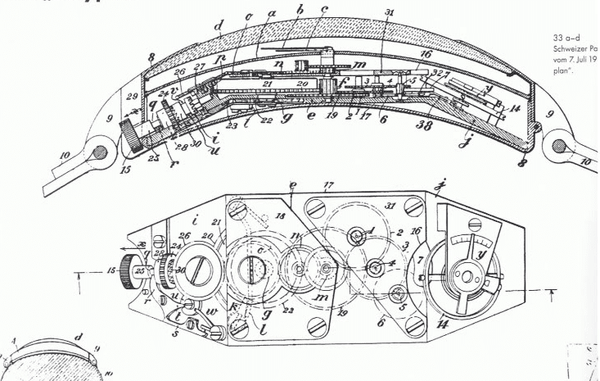

The name Polyplan comes from its multi-(poly)level shape and design, with the movement arranged on three levels.

The movement and case are endowed with a striking curvaceous beauty that is more striking than any other watch, due in part to the ephemeral brilliance of this construction.

Approximately 1,500 of this specimen were produced between 1912 and 1917 , making it one of Movado's rarest and most sought-after models among collectors.
With this in mind, in November 2019 , Antiquorum Auction House purchased a sample model of the Polyplan for 10,625 Swiss francs (approximately 1.4 million yen).
Although it is not the "ultimate" Movado product, the Curviplan can be said to be a genuine Movado product.
The "Kabiplan" series has a variety of metal materials and dial variations.
The " CURVIPLAN " was produced between 1926 and 1940 and was equipped with the Cal. 510 movement, which featured a highly curved bridge.
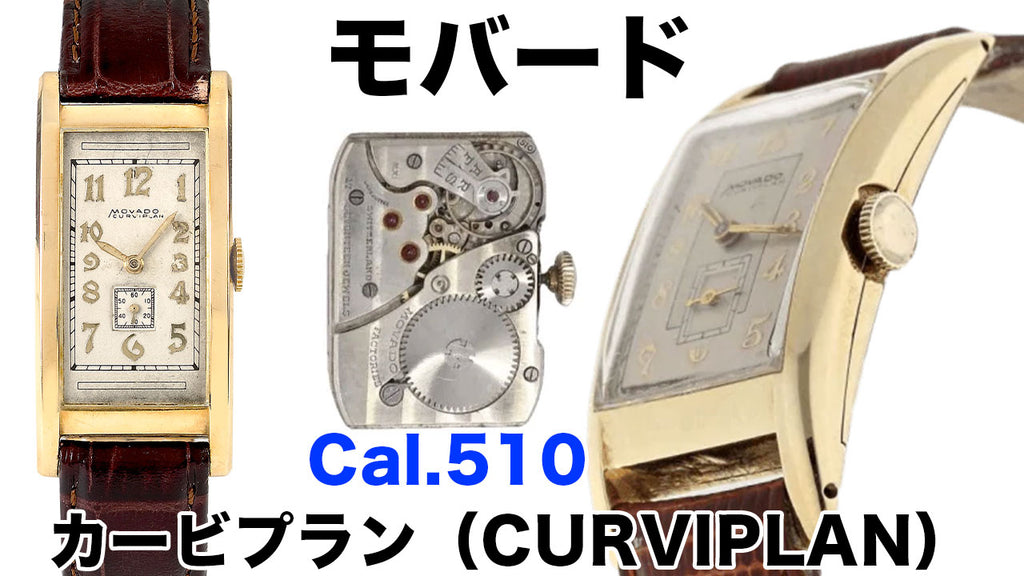
It's unlikely that you'll come across Polyplan, but if you look hard enough you should be able to find Curviplan and possibly even get it.
Emmert
Introduced in 1926 , the Ermeto is perhaps the Movado brand's most well-known and iconic model.
This model was marketed as a travel watch, combining all the elegance and design of a traditional pocket watch.
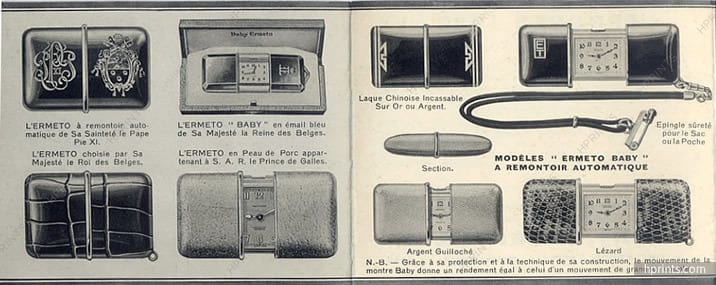
The name comes from the fact that the watch movement and dial could be "sealed" in an adjustable metal case, which was then lined with luxurious leather.
In 1927 , just one year after its introduction, Movado gave the Emert a very attractive and innovative addition.
It is a mechanism that allows the movement to be automatically wound by opening and closing the "hermetically sealed" case (patented by Movado).
This revolutionary feature has made the Hermeto what could be called a "pseudo automatic watch."
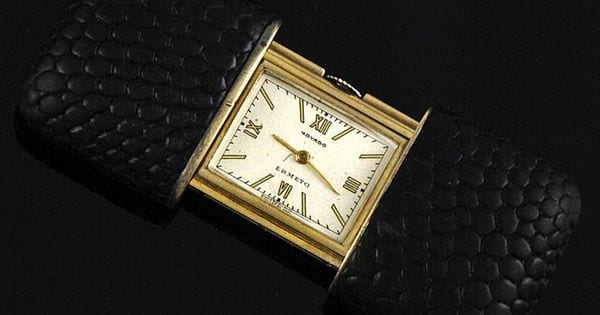
Movado's Most Important Chronograph Movement
In the late 1930s , Movado introduced its first chronographs with movements entirely made in-house.
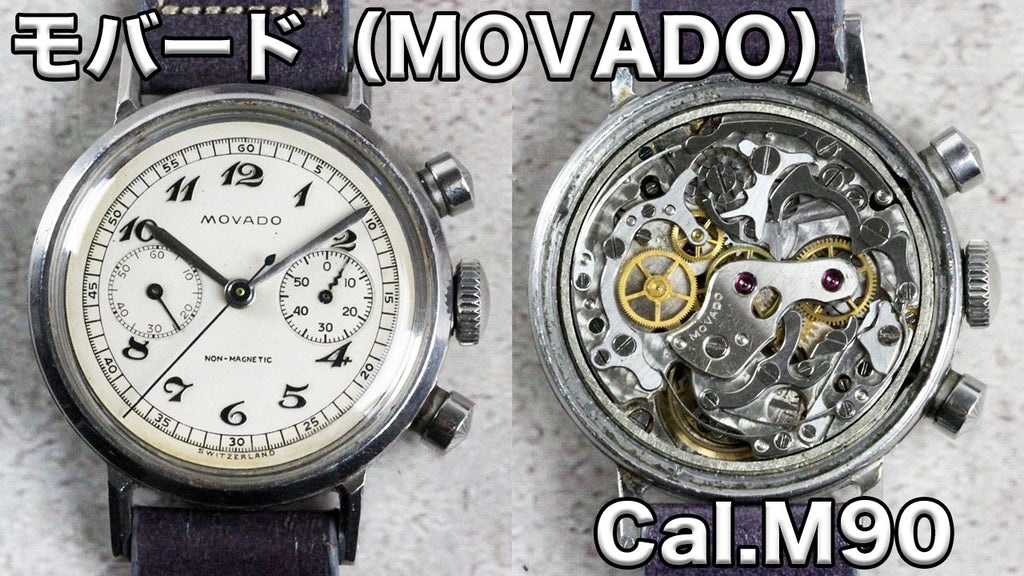
An easy way to tell the difference is that the M90 has two subdials and the M95 has three.
The M90 was introduced in 1938 and was produced until 1965 .
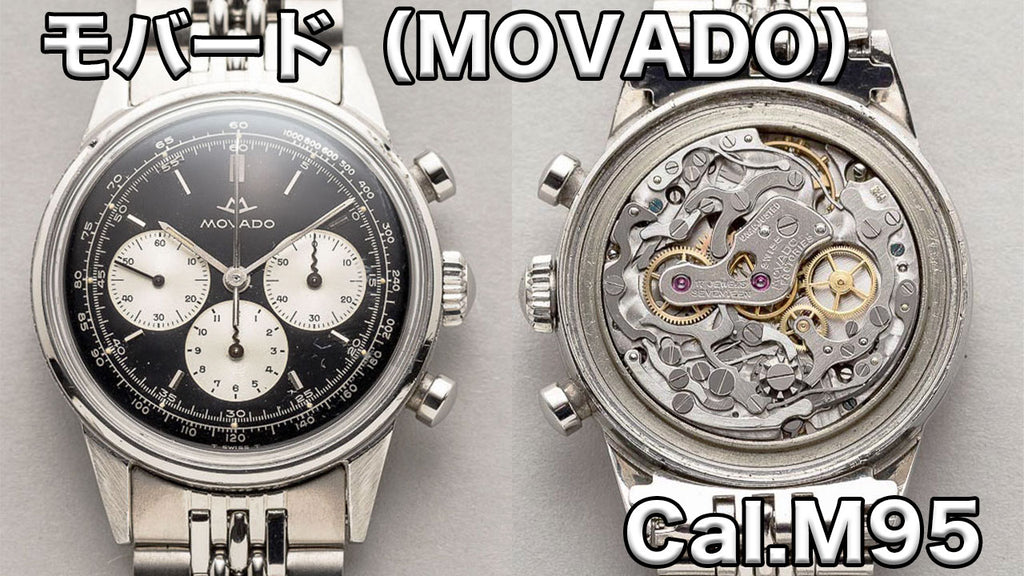
On the other hand, the M95 was produced one year after the M90 (in 1939 ) and was used in Movado watches until the early 1970s , when the collaboration with Zenith , the El Primero, began.
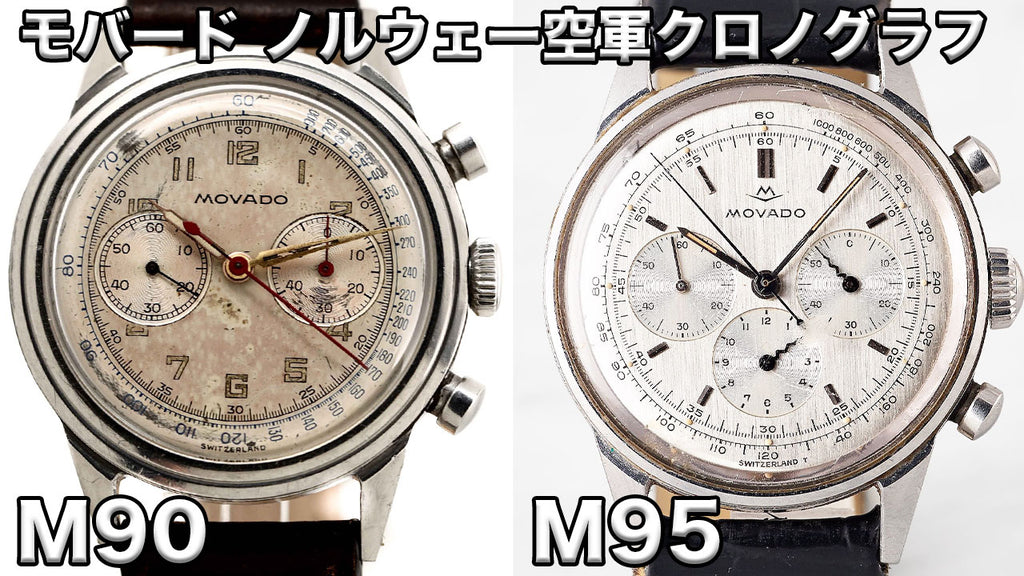
The one on the left is M90 and the one on the right is M95.
The M90 was issued to the Norwegian Air Force around 1945 towards the end of World War II, and the next model, the M95, was issued from the 1950s to the 1960s.
There is little difference in appearance between the commercial version and the military version, but the military version has the Norwegian military mark engraved on the back of the case.
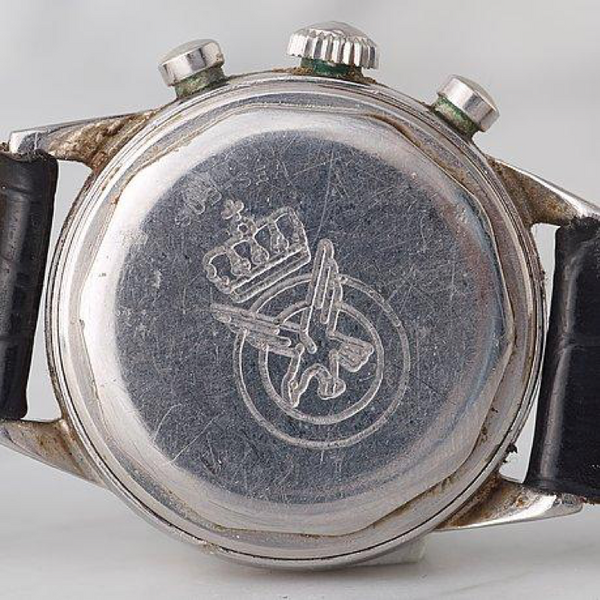
Along with the Swedish military engravings, the engravings on Nordic military watches are often coat of arms-like marks and look very cool!
Calendar Graph, Celeste Graph, Calendarmatic
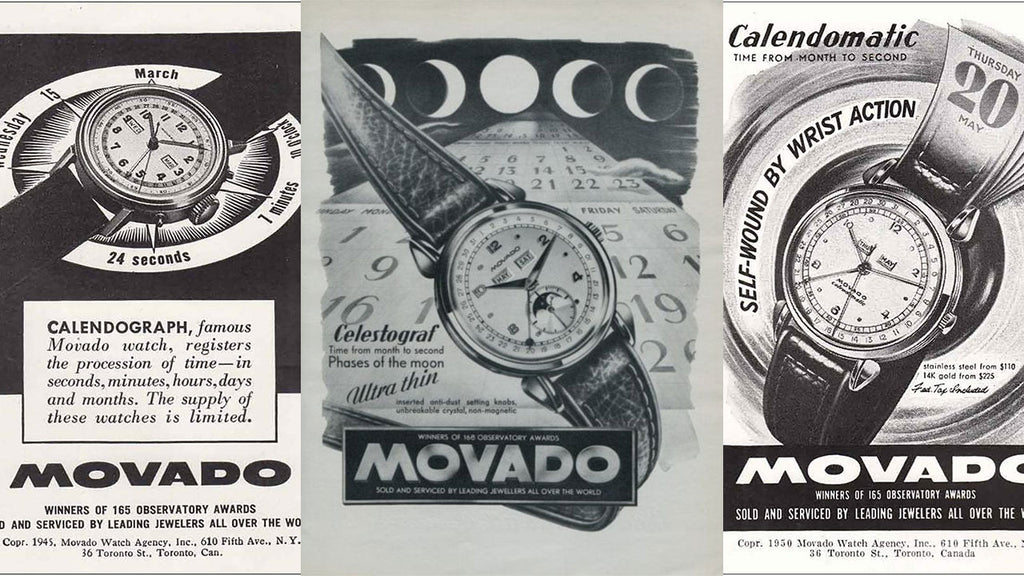
These aren't the only Movado masterpieces.
The three models we will introduce below can be categorized according to the type of movement they are equipped with and the complexity of the movement they display.
The first calendar graph, known as the "Movado Triple Calendar," was introduced in 1938 and was produced until 1954 .
It is equipped with Caliber 475 (a derivative of the Movado 470 ) and displays hours, minutes, seconds, day, date, and month.

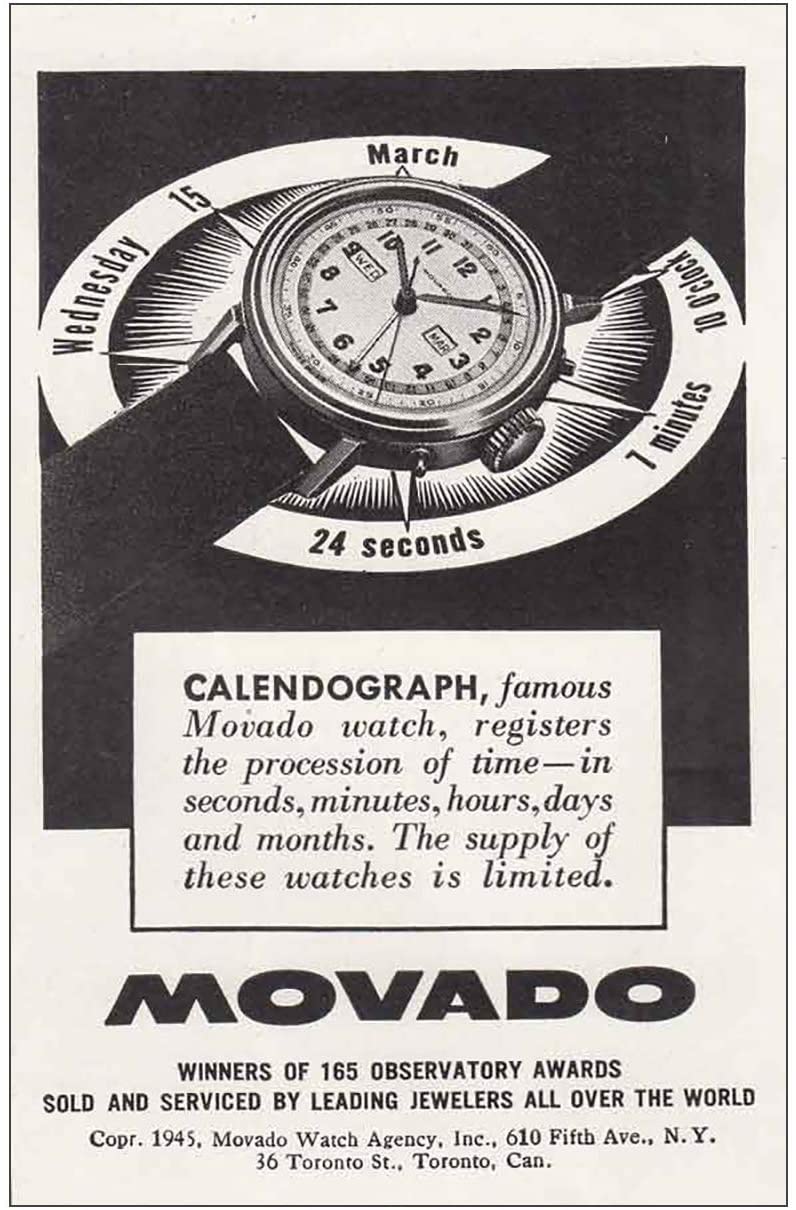
Next is the "Celestegraph." Called the "Astrograph" in the United States, this model is unique in that it can display all of the functions mentioned above, but also has the complex function of a month display ( which automatically advances the month display when the month changes from the 31st to the 1st ) .
There is also a moon phase at the 6 o'clock position.
Produced between 1947 and 1954 , this model was equipped with the caliber 473 , a derivative of the caliber 470 , just like the Calendograph.

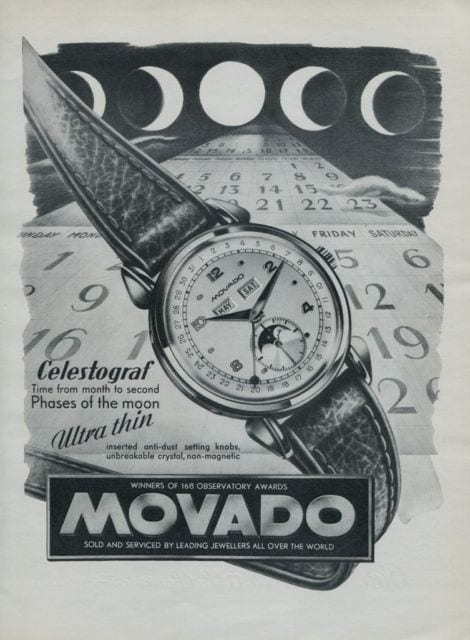
Produced between 1948 and 1954 , the Calendomatic is an automatic version of the Calendogras.
Like chronomatic, the word "matic" means "automatic," so if you remember that, it will be easy to understand what a calendar graph is.
Other than the automatic winding Cal. 220 , the specifications are almost the same as the Calendograph.
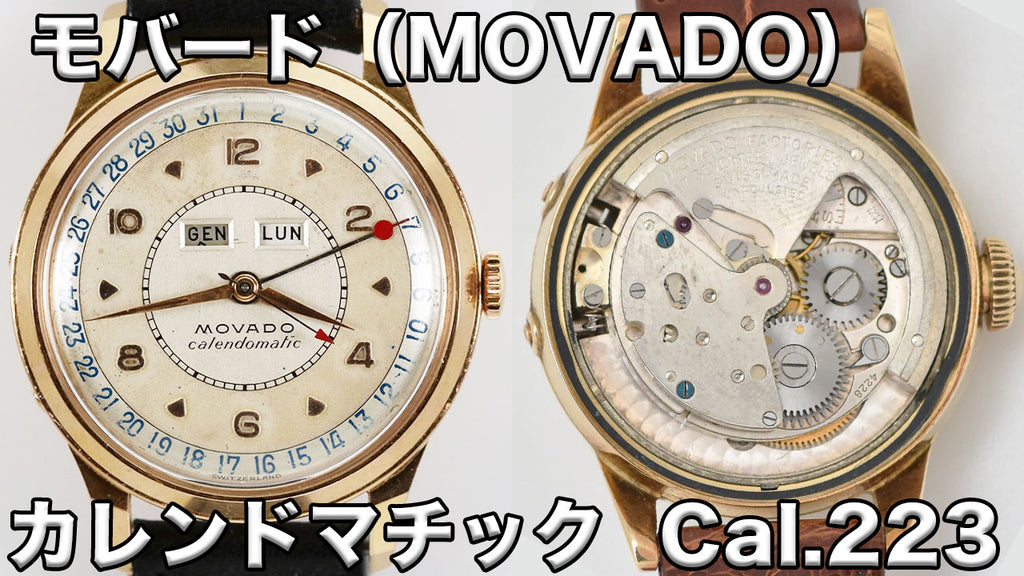
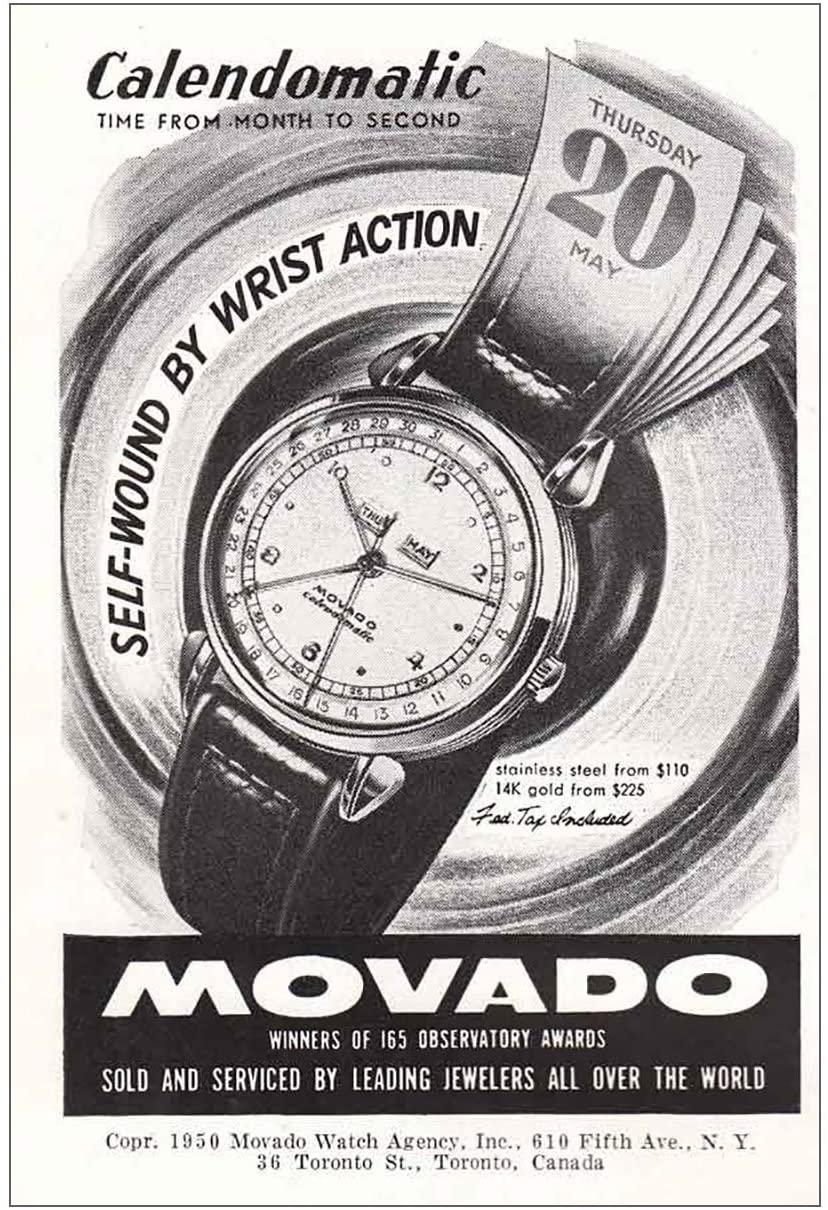
Movado and Francois Vogel
Movado has a close relationship with François Vogel, one of the most legendary case makers of the 20th century, producing the waterproof cases found in watches from Patek Philippe, Mido, Ulysse Nardin, and more.
Now, let's take a look at the images to see what these three watches have in common.
From left to right: Patek Philippe Tasti Tondi , Mido Multicenter, and Movado Chronograph.
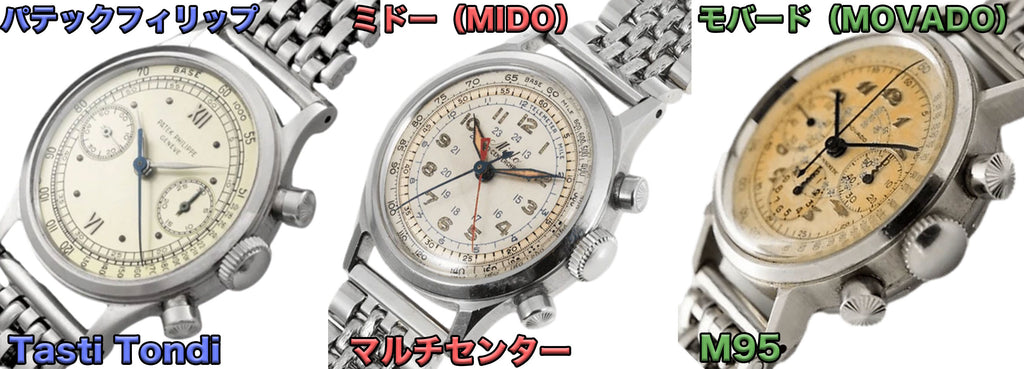
Vogel cases are unique and distinctive in design, but if you're having trouble identifying them, you can check them on the inside of the case back.

It features Vogel 's unique signature engraving, which features the letters F and B above a key mark.
Movado Signed Collaboration
The timeless and elegant case designs and dials of the Movado brand are definitely something to look out for.
Many well-known and sophisticated brands from the watch, jewelry and fashion industries came forward to discuss possible collaborations with Movado.
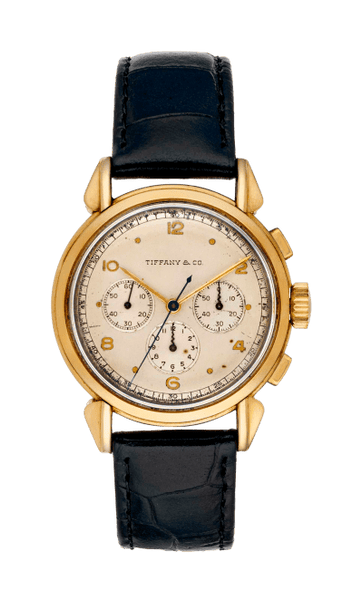


Many of Movado's signature pieces are still sold under the names of other companies, such as Tiffany, Hermes, and Cartier, which are well known as high-end brands today, demonstrating the reliability of Movado watches.
Now, these watches are considered rare Movado double-signature pieces.
summary
Although Movado is not well known, it has produced many masterpieces like these.
The watches themselves were well-designed and made to be of high quality.
Although the company went bankrupt as a result of the quartz crisis, when viewed from the perspective of the mechanical watch category, it can be said that it was a company with overwhelming reliability and technical ability.



